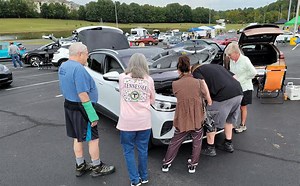The federal government is committed to supporting electric vehicle (EV) adoption. With measures like the Infrastructure Investment and Jobs Act (IIJA) and the Inflation Reduction Act (IRA) bringing new funding and opportunities, attention on EVs and charging infrastructure is at an all-time high. Fortified with these federal actions, state and local governments (SLGs), as well as utilities, have a prime opportunity to invest in what might be the most crucial component of sustained, equitable, mainstream EV adoption: educating the market.
Even with more than a decade of market growth and industry advancements in the rearview mirror, the barriers to getting more EVs on the road have generally stayed the same. Common talking points focus on high upfront vehicle costs, limited electric range, and convenient and reliable access to charging. We can add concerns about equitable access to the benefits of transportation electrification to this list. So, how can education help to reduce or eliminate these barriers?
It really comes down to comfort. Increased EV adoption requires American consumers and fleet managers to become more comfortable with new technology. And while that technology does require some behavioral changes, education can help put those changes into context, along with the associated benefits. For example, an EV may take all night to charge at home but taking advantage of a lower off-peak utility rate means significant cost savings compared to fueling a gas car.
Comfort is often synonymous with familiarity, and there is a high level of correlation between familiarity with EVs and the likelihood of buying one. According to an April 2022 Consumer Reports survey, more than two-thirds of Americans who “would definitely” buy or lease EVs if they were to acquire a vehicle today claim to be “very” or “somewhat” familiar with EVs. Some of this familiarity comes through exposure to friends and neighbors with EVs, as EV drivers are reliably the most vocal cheerleaders and ambassadors for the technology.



